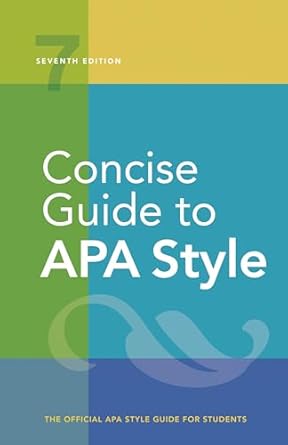[toc]
apa style dois and urls in references explained
Concise Guide to APA Style: 7th Edition (OFFICIAL)
Page 257 Review
Decoding APA Style: A Deep Dive into DOIs and URLs in References
In the realm of academic writing, precision and clarity are paramount.
The American Psychological Association (APA) style, a widely adopted citation format, provides a structured framework for referencing sources.
This commentary delves into Section 9.34 and 9.35 of the APA Publication Manual, focusing specifically on the inclusion of Digital Object Identifiers (DOIs) and Uniform Resource Locators (URLs) in reference entries.
The Importance of DOIs and URLs
DOIs and URLs serve as vital pathways for readers to access the cited material.
A DOI is a persistent, unique alphanumeric string assigned to a digital object, ensuring its long-term accessibility.
URLs, on the other hand, are web addresses that can lead to online resources.
Understanding when and how to include these elements is crucial for accurate and reliable referencing.
DOI Inclusion: A Priority
According to APA guidelines, “Include a DOI for all works that have a DOI, regardless of whether you used the online version or the print version.” This directive emphasizes the primacy of DOIs.
Even if you consulted a print copy of a work, if a DOI exists, it should be included in the reference.
Handling Print Works Without DOIs
Conversely, “If a print work does not have a DOI, do not include any DOI or URL in the reference.” This rule simplifies the referencing process for traditional print materials lacking digital identifiers.
Navigating Online Works with DOIs and URLs
The guideline “If an online work has both a DOI and a URL, include only the DOI” prioritizes the DOI as the more stable and reliable identifier.
DOIs are designed to be permanent, while URLs can change over time.
URLs for Online Works Without DOIs: A Nuanced Approach
When an online work lacks a DOI, the inclusion of a URL becomes more complex.
APA style offers specific guidance based on the source of the online material.
Websites (Excluding Databases)
For works without DOIs found on general websites, “provide a URL in the reference (as long as the URL will work for readers).” The emphasis here is on ensuring the URL’s functionality and accessibility.
Academic Research Databases
APA distinguishes between different types of academic research databases.
For most databases, “do not include a URL or database information in the reference because these works are widely available.” The rationale is that these works are typically indexed and readily accessible through library catalogs and search engines.
The reference should mirror that of a print version.
Databases with Limited Circulation or Proprietary Material
However, for databases with limited circulation, such as the ERIC database, or those containing original, proprietary material, such as the UpToDate database, “include the name of the database or archive and the URL of the work.” If the direct URL requires a login or is session-specific, “provide the URL of the database or archive home page or login page instead of the URL for the work.” This ensures readers can access the resource even if they cannot directly reach the specific document.
Dealing with Non-Functional URLs
What happens if a URL becomes inactive or no longer provides access to the intended content? “If the URL is no longer working or no longer provides readers access to the content you intend to cite, follow the guidance for works with no source.” This implies that the reference should be treated as if the source is unavailable, potentially requiring a different referencing strategy, such as citing a secondary source.
Excluding Other Identifiers
The guidelines explicitly state that “Other alphanumeric identifiers such as the International Standard Book Number (ISBN) and the International Standard Serial Number (ISSN) are not included in APA Style references.” This simplifies the reference entry by focusing solely on DOIs and URLs when applicable.
Formatting DOIs and URLs: Hyperlinks are Key
Section 9.35 addresses the proper formatting of DOIs and URLs: “Present both DOIs and URLs as hyperlinks (i.e., beginning with ‘http://’ or ‘https://’).” The inclusion of hyperlinks is crucial, as it allows readers to directly access the cited material with a single click.
Redundancy Avoidance
APA style also emphasizes conciseness: “Because a hyperlink leads readers directly to the content, it is not necessary to include the words ‘Retrieved from’ or ‘Accessed from’ before a DOI or URL.” This streamlined approach contributes to a cleaner and more efficient reference list.
Conclusion
Mastering the nuances of DOI and URL inclusion in APA style references is essential for maintaining academic integrity and ensuring the accessibility of cited sources.
By adhering to these guidelines, researchers and writers can contribute to the clarity and reliability of scholarly communication.
These rules, seemingly small, collectively ensure the reader can effectively navigate the sources used in the research.
Buy full ebook for only $18: https://www.lulu.com/shop/american-psychological-association/concise-guide-to-apa-style-7th-edition-official/ebook/product-rmzpq54.html?page=1&pageSize=4


Leave a Reply